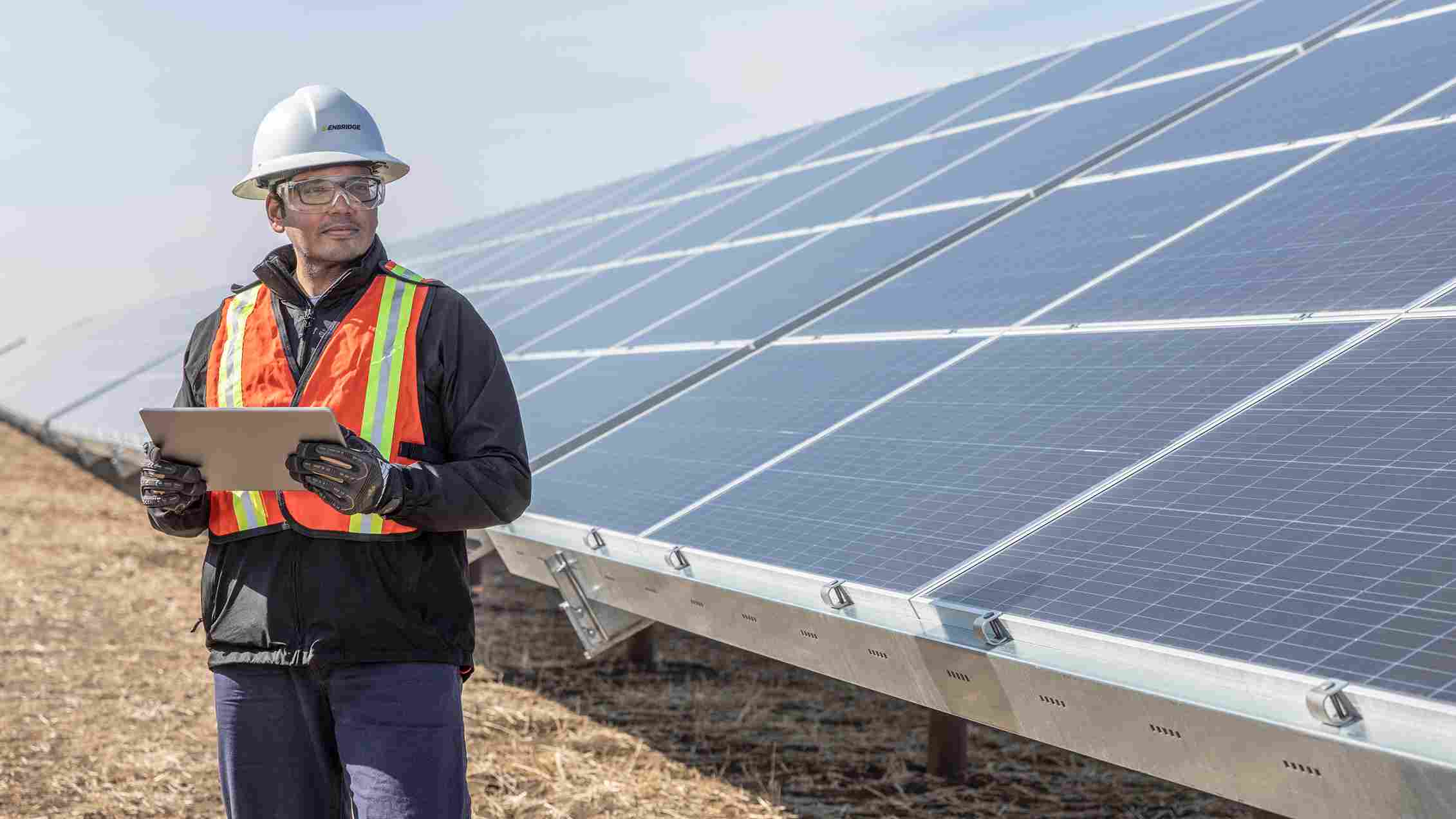| | | | | | | Presented By Enbridge | | | | Axios Generate | | By Ben Geman and Andrew Freedman · Jul 22, 2022 | | 🍺 We made it! Today's newsletter, edited by Mickey Meece, has a Smart Brevity count of 1,184 words, 4.5 minutes. 📬 Did a friend send you this newsletter? Welcome, please sign up. 🎶 Happy birthday to funk pioneer George Clinton of Funkadelic and Parliament, who have this week's final intro tune... | | | | | | 1 big thing: Democrats' fragile gas price reprieve |  Data: AAA; Chart: Jacque Schrag/Axios Falling gasoline prices may be a political relief for President Biden and Democrats, but there's no guarantee they won't spike again ahead of the midterm elections, Ben writes. Driving the news: The national average has plummeted by nearly 60 cents since breaching $5 per gallon in mid-June, per AAA, though prices remain high. The big picture: Future oil and gasoline prices are notoriously hard to game out, and this moment is especially heavy on wild cards. But analysts see the possibility of another price spike in the months ahead, even though markets have loosened up somewhat. Two of the key risks ... - Tightening European sanctions and other efforts to cut Russia's fossil fuel exports windfall — steps that could slash production there.
- An active hurricane season could produce powerful storms that hit the Gulf Coast.
What they're saying: Energy analyst Bob McNally says the crisis spawned by Russia's invasion of Ukraine is creating perhaps the largest prolonged energy disruption risk since the 1970s. - "To paraphrase Winston Churchill, we're not even at the end of the beginning of this energy war, this conflict, much less the beginning of the end," he said.
The International Energy Agency this month reported that Russian supply has thus far remained "resilient," but it added: - "As an EU embargo on Russian oil is set to come into full force at the end of the year, the oil market may tighten once again."
Don't sleep on weather and climate change either. NOAA predicts this year's Atlantic hurricane season may be unusually active. - Major storms hitting the Gulf Coast refining belt could curtail gasoline output and transport in what's already a tight fuels market.
- GasBuddy petroleum analyst Patrick De Haan tells Axios that absent disruptions, he sees national average gas prices en route back to less than $4 per gallon.
- But he adds: "If we do see a major hurricane, there could and likely will be a profound impact, especially if it's a Category 4 or 5, maybe even a Category 3 storm."
- "If we see that between New Orleans and Houston, I would say all bets are off and certainly there's a potential we go right back up to $5."
Read the whole story. |     | | | | | | 2. Jet stream connections |  | | | Illustration: Sarah Grillo/Axios | | | | Two heat waves an ocean apart are inextricably linked, Andrew writes. Why it matters: These kinds of interconnected heat waves could become even more extreme in the future, due in part to human-caused climate change. Driving the news: The jet stream has come under particular scrutiny by climate scientists in recent years due to the hypothesis that the changing temperature difference between the equator and the North Pole could slow down this key weather maker, especially during the summer. - Perturbations in the jet stream, or its waviness, can enable the formation and maintenance of intense heat domes such as those that have impacted parts of the U.S., Europe and Asia in recent weeks.
The big picture: The jet stream travels around the Northern Hemisphere from west to east, powered by the temperature differences between air masses. - Some climate scientists think that over time, climate change is affecting the jet stream in ways that make long-lasting, stronger areas of high pressure, or heat domes, more likely to occur.
Read more. |     | | | | | | 3. How "smart" surfaces could help hot cities |  | | | Illustration: Aïda Amer/Axios | | | | Cities could dramatically reduce peak summer temperatures by replacing hot, dark surfaces — like streets, rooftops, playgrounds and parking lots — with cooler alternatives, according to the Smart Surfaces Coalition, Axios' Jennifer A. Kingson reports. Why it matters: Cities have been slow to embrace mitigation measures — which can be as simple as painting asphalt with inexpensive chemical coatings that block the absorption of solar radiation. - Urban policymakers have been working "piecemeal" on initiatives like "cool roof" policies and "cool pavement" programs — but they'll only get meaningful results from an inclusive plan that involves all heat-trapping surfaces, says Smart Surfaces Coalition founder Greg Kats.
- A full suite of interventions could reduce peak temperatures up to 5 degrees — but make it feel up to 15 degrees cooler, he said. The three-year-old coalition is working with Baltimore to try to make the city a model of what can be done.
Read the whole story. |     | | | | | | A message from Enbridge | | At Enbridge, our focus is on tomorrow | | |  | | | | We're investing in low-carbon solutions and modernizing our systems to advance the energy transition. Our latest sustainability report shares our progress in meeting our ESG goals and integrating sustainability across our businesses. Explore the report. | | | | | | 4. Charting Europe's power crunch |  Data: Rystad Energy; Chart: Thomas Oide/Axios Electricity prices in Europe are headed to record-breaking territory — and government bailouts are getting underway to save the energy market, Axios' Kate Marino writes. - In Germany, France and Italy, July is on track to be the highest-priced month ever for spot power prices, according to Rystad Energy.
The big picture: A perfect storm of soaring natural gas prices triggered by Russian supply issues, high coal prices, low wind speeds and scorching weather is driving the price moves, the research firm wrote in a recent note. State of play: Some of Europe's electric utilities — faced with passing on higher costs to customers or taking losses themselves — are failing. - Germany's Uniper SE today agreed to a bailout deal in which the government will take a 30% stake in exchange for €15 billion euros.
- Électricité de France agreed to a full takeover by the French government, which will inject €10 billion.
What to watch: Bloomberg's Javier Blas estimates the bailouts have only just begun — and may ultimately cost European taxpayers $200 billion or more. |     | | | | | | 5. Amazon's new electric Rivian vans hit the road |  | | | Photo courtesy of Amazon | | | | Amazon began wide-scale deliveries yesterday of its Rivian-designed electric cargo van, a next-generation logistics vehicle years in the making, Axios' Alex Fitzpatrick reports. Why it matters: Significantly electrifying Amazon's delivery van fleet could help the company meet its ambitious target of hitting net-zero carbon emissions by 2040. Commercial fleets will probably go electric at a significant scale before everyday car buyers — meaning companies like Amazon and FedEx are poised to drive the electrification revolution. Driving the news: Amazon introduced the production model of Rivian's van, called the Electric Delivery Vehicle (EDV), at a Chicago press event following a pilot program that began last year. The EDV also rolled out Thursday in Baltimore, Dallas, Kansas City, Nashville, Phoenix, San Diego, Seattle and St. Louis, "among other cities" in the U.S., per Amazon. Read the whole story. |     | | | | | | 6. Zooming in on Ford's battery push |  | | | Illustration: Gabriella Turrisi/Axios | | | | Axios' Joann Muller has an incisive look at Ford's suite of battery and raw materials sourcing announcements we covered yesterday. Zoom in: One way Ford intends to meet its EV targets: adding a second type of battery chemistry to its lineup called lithium iron phosphate (LFP), alongside its existing nickel cobalt manganese (NCM) chemistry. - It will initially import LFP battery packs from China's Contemporary Amperex Technology Co. Ltd. for its Mustang Mach-E and F-150 Lightning pickup, starting next year.
- But Ford also wants to produce LFP batteries in North America and plans to open a 40-GWh LFP cell factory by 2026. (That's in addition to three previously announced battery plants in Tennessee and Kentucky.)
Between the lines: Iron and phosphorous are abundant, which is why LFP cells cost at least 30% less than today's nickel- and cobalt-based batteries, Guidehouse Insights' Sam Abuelsamid explains in Forbes. Keep reading. |     | | | | | | A message from Enbridge | | At Enbridge, our focus is on tomorrow | | |  | | | | We're investing in low-carbon solutions and modernizing our systems to advance the energy transition. Our latest sustainability report shares our progress in meeting our ESG goals and integrating sustainability across our businesses. Explore the report. | | | | 🎉 Have a great weekend and we'll see you back here on Monday. |  | | Why stop here? Let's go Pro. | | | | | | Axios thanks our partners for supporting our newsletters. If you're interested in advertising, learn more here.
Sponsorship has no influence on editorial content. Axios, 3100 Clarendon Blvd, Arlington VA 22201 | | | You received this email because you signed up for newsletters from Axios.
Change your preferences or unsubscribe here. | | | Was this email forwarded to you?
Sign up now to get Axios in your inbox. | | | | Follow Axios on social media:    | | | | | |
Post a Comment
0Comments